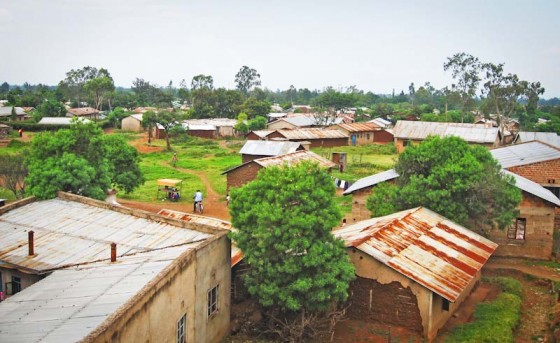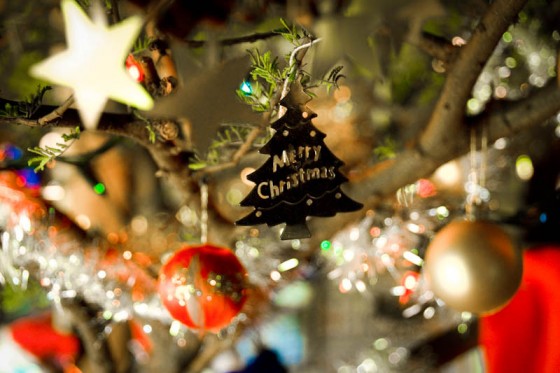How to create your own Christmas decorations using clay, cigarette packs, and a little un-permitted pruning.
The other day my wife and I decorated our Christmas tree. As I admired the manufactured ornaments, illuminated by a backdrop of colored lights on an electric cord, I remembered the more modest tradition that I grew up with back in Kenya.
There, our Christmas decorating began with one of the scariest adventures of the year for my peers and I.
We went to the home of a dreaded man with a graveyard in his backyard. His name was Mwaura. People paid him to bury their loved ones, especially those who had moved to the city and could not afford to transport the remains for the usual traditional burial in their rural homes.
Mwaura’s home happened to be in one of the few clusters of shacks that were surrounded by cypress trees. The cypress was rare around town, but its branches were highly valued as a makeshift Christmas tree.
In fact, even though our neighborhood was known as a slum, and generally regarded as a dangerous place, it attracted a lot of visitors during holiday season. They came for the grey clay soil (I’ll get to that in a moment) and to seek out the few homes that had cypress trees as living fence for security and privacy.
The normal protocol for people from other parts of the city was to go to the homes of decent families who had the cypress trees and ask for permission to cut a branch to decorate their houses.
But Mwaura’s home was surrounded with bigger and greener trees, and very few people approached him because of his frightening visage and frequent refusal to sell you his boughs if he didn’t like you.
Mwaura also had a small retail shop in front of his house, and he would ride his bicycle between his shop and the wholesale stores in Manyatta Market a few times a day to stock up on wares. He wore his rugged black boots, roughly cut blue jean shorts, and his blue jean jacket that was always unzipped. He almost always had a cigarette hanging loosely between his dry lips and his eyes were usually red. The whole ensemble made him look like a character from a horror movie and led most people in our neighborhood to fear him.
But during the holidays, the excitement took us straight to Mwaura. Once we gathered in a group of about seven, and armed with our machetes for cutting the cypress trees, we secretly took off. As soon as we were out of site from our parents, we sprinted towards his home.
 An overhead view of Manyatta, a “slum” in Kisumu, Kenya. (Photo by Simon Okelo)
An overhead view of Manyatta, a “slum” in Kisumu, Kenya. (Photo by Simon Okelo)
We arrived in the morning when Mwaura had many customers at his shop stocking up on items for breakfast. We sent a few decoys to ask him to look for things that we knew he didn’t have in stock, while the rest of us happily cut Christmas trees in his backyard.
Once we all had our branches of trees we sprinted back home through the back streets and assured our parents that we’d just picked leftover branches from people that were passing by our neighborhood with trees they’d purchased.
Step two of our holiday decorating delight took place at the eroded pond behind our house, where we’d dig sticky wet clay for creating Christmas lights. Once we had enough of the wet clay collected in plastic bags, we dropped them at home and ran to Manyatta Market, the largest local open-air market in my neighborhood. We walked from shop to shop collecting the shiny silver papers used to line empty cigarette packages. And then we walked home by way of the hair salons, where we collected left over black threads.
With all of our decorating items collected, we sat down and began to roll the clay into balls the size of marbles. Then we carefully wrapped them with the shiny silver coated paper we had taken from cigarette packets, and using a broom stick we’d push the knotted threads into the semi-wet shiny balls. We put the balls aside to dry while we poured construction sand into used paint containers to ‘plant’ the branches of cypress trees we had taken from Mwaura’s fence.
Once the tree was stable, and the balls were dry enough, we tied them onto the Christmas tree, and placed it on the wall opposite the main door to our house to allow the light coming in through the door to provide illumination to our shiny ornaments.
Our perfectly lit Christmas tree was a spectacular site, made even better by the aroma of the food being prepared in the kitchen on Christmas Eve.
I imagine by now a majority of homes around Seattle are well decorated, and the holiday season is ripe. Here we have the choice of indulging in excesses to get us enthusiastic about Christmas, or of staying humble for the holiday. But whether you have a big house strung with thousands of lights and piles of presents under the tree, or you take a more modest approach, like what I grew up with in Manyatta, the spirit of the season is the same.



I just wanted to say I stumbled on your articles because Solomon had posted about One Vibe after hosting the different dinners from African countries at Cafe Avole. I loved this article and the camraderie and creativity of the kids.
I am in a teaching program and will be working at a high school in the Southend next year, with students many of whom are from East Africa, and I hope to incorporate stories like these that show a deeper story of the continent that is so often taught in school.
So thank you for sharing your writing and stories.